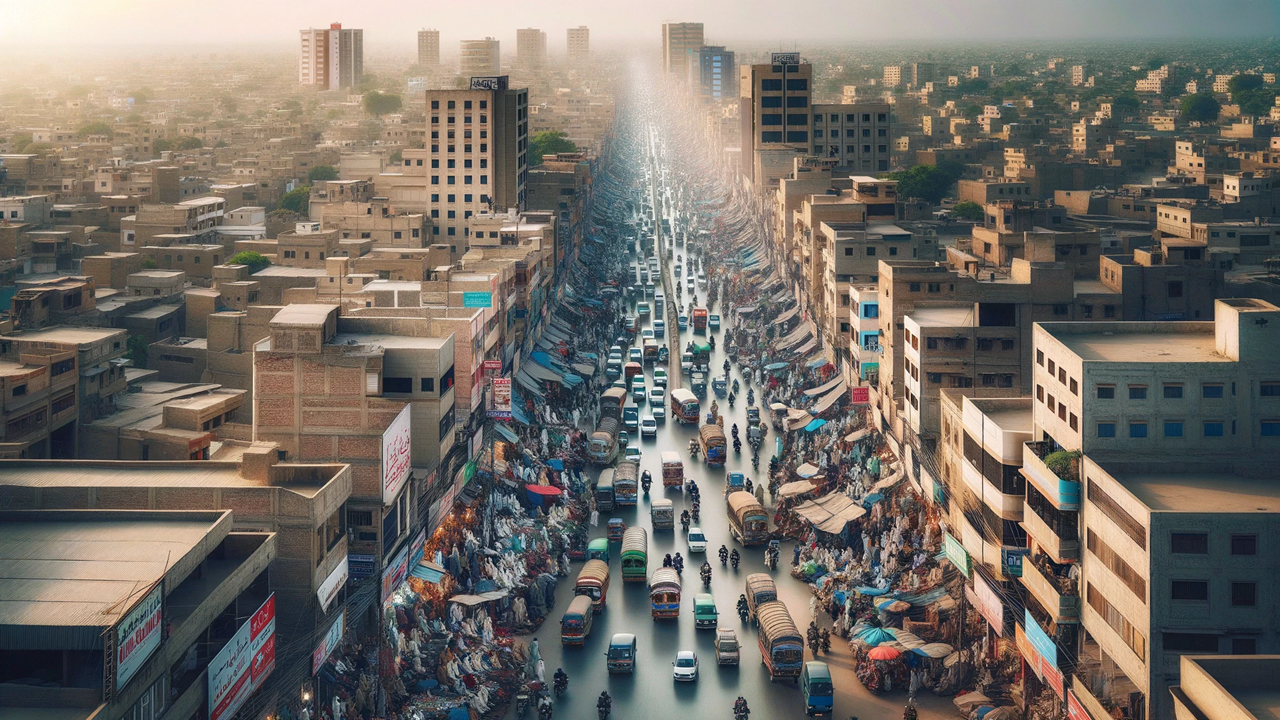Revitalizing Pakistan's Secondary Cities: The Road to Sustainable Urban Growth
The World Bank's report "Realizing the Potential of Pakistan’s Secondary Cities" highlights the urgent need for institutional, financial, and infrastructural reforms to unlock the potential of these cities. Improved urban management, investment in infrastructure, and enhanced climate resilience are essential for sustainable growth and better livability in Pakistan's secondary cities.

Pakistan is undergoing a rapid urban transformation. According to a recent World Bank report, "Realizing the Potential of Pakistan’s Secondary Cities," the country's urban areas are expected to house 55% of its population by 2030. However, poor urban management, inadequate planning, and lagging service delivery are major hurdles. To unlock the full potential of urbanization for economic growth and poverty alleviation, significant reforms are necessary.
Challenge of Urban Growth
Urban growth in Pakistan is driven by both natural population increase and migration from rural areas. Yet, the current urban management system is ill-equipped to handle this growth. Only 39% of municipal solid waste is collected, and just 45% of the urban population has access to improved piped water. This poor service delivery, coupled with weak and fragmented urban management, hampers effective governance and makes cities increasingly unlivable.
Secondary cities, which house 36% of Pakistan’s urban population, are experiencing rapid, often unplanned, spatial expansion. This leads to inefficiencies and increased vulnerability to environmental hazards such as flooding, drought, and heat waves. Without a coherent strategy, these cities risk becoming more inefficient and hazardous, undermining national productivity and human capital.
Investing in Secondary Cities
Despite these challenges, secondary cities hold significant potential. They are crucial for sustaining economic development and improving the well-being of residents. However, to harness this potential, substantial investments in infrastructure and services are required.
The World Bank report highlights significant deficits in municipal infrastructure in secondary cities, including water supply, sanitation, drainage, solid waste management, and transportation. Addressing these deficits is essential for sustainable growth. Improved infrastructure can enhance livability, attract investment, and support economic development.
Enhancing Climate Resilience
Secondary cities are highly vulnerable to climate risks. Strengthening urban resilience requires robust policies, planning instruments, and investment in climate-smart infrastructure. Integrating climate resilience and disaster risk reduction into urban planning and investment is crucial to mitigate these risks.
The report recommends investing in climate-smart infrastructure and services to protect city populations from environmental hazards. This includes upgrading drainage systems to handle increased rainfall, creating green spaces to reduce heat, and ensuring a reliable water supply during droughts. These measures not only protect residents but also enhance the overall quality of urban life.
Strengthening Institutional and Financial Frameworks
Effective urban management requires coherent institutional arrangements and capacity building. Local governments need clear functional responsibilities and the ability to coordinate across sectors. Restoring regular elections for local government bodies can enhance accountability and improve governance.
Financial reforms are also critical. Increasing the yield from the Urban Immovable Property Tax (UIPT) and ensuring equitable distribution of revenues can provide the necessary resources for urban development. Enhancing non-property tax revenues through better tax administration and user charges for basic services can also improve municipal finances.
Reforming fiscal transfers to local governments to ensure alignment with equity and efficiency principles is another important step. By addressing these financial challenges, secondary cities can secure the funding needed for sustainable development.
Targeted Interventions for Secondary Cities
To fully realize the potential of secondary cities, the World Bank report outlines several targeted interventions. These include strengthening urban institutions, enhancing municipal finance, improving urban planning, investing in infrastructure and services, and promoting inclusiveness.
Strengthening Urban Institutions involves enhancing the coherence, accountability, and capacity of urban institutions. Ensuring that local governments have the functional responsibility to manage key infrastructure sectors effectively is crucial.
Enhancing Municipal Finance focuses on improving revenue generation through better tax administration and leveraging private sector investment. Reforming fiscal transfers to local governments to ensure a greater total city funding envelope is essential.
Improving Urban Planning requires revising the spatial jurisdictions of urban management entities to align with actual urban growth. Investing in the upgrading and digitization of urban management systems is also important.
Investing in Infrastructure and Services emphasizes the need to focus on climate-smart municipal infrastructure and services, including water supply, sanitation, drainage, solid waste management, and transportation.
Promoting Inclusiveness aims to enhance the business and economic environment in secondary cities to support inclusive growth.
Path to Sustainable Urban Development
Pakistan’s secondary cities hold immense potential to drive national economic growth and improve livability. However, realizing this potential requires comprehensive reforms in urban management, infrastructure, and finance. By addressing these challenges and leveraging the opportunities, Pakistan can achieve sustainable and resilient urban development.
- FIRST PUBLISHED IN:
- Devdiscourse
ALSO READ
Narendra Modi Unveils Infrastructure Boost in Jharkhand
NDA Government Approves Massive Infrastructure Projects
BJP-Led NDA Government Approves Major Infrastructure and Agricultural Initiatives
Odisha's Grand Welcome for PM Modi: Launch of Subhadra Yojana & Major Infrastructure Projects
Sebi Greenlights IPOs for Five Firms Including Afcons Infrastructure










